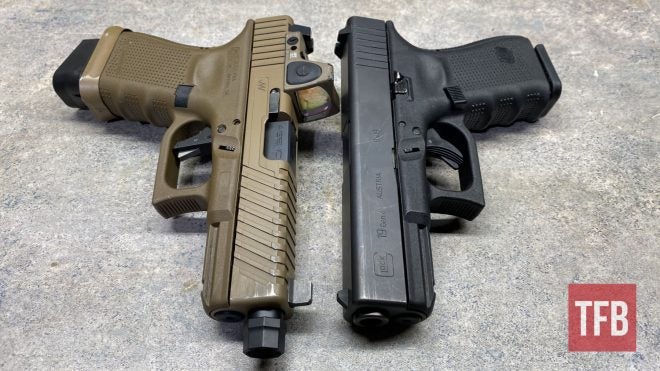Last week, I talked about the importance of one-handed shooting and practicing with both your support and dominant hand. There were a few great debates in the comment section and I loved how you guys digested that. I went to the range early Saturday morning with three close friends who are all experienced shooters and did one-handed drills. We added time and a bit of physical exertion into the mix and some strange things started to happen.
The added stress made my groups open up and during the course of fire, one of my friends shot with his left hand and put his thumb over his support hand which was in the path of the Glock slide. It ended up biting him fairly bad and he bled for a solid 15-20 minutes before it finally stopped bleeding. Adding real-world stress training can sometimes be the difference when under stress in a self-defense situation.
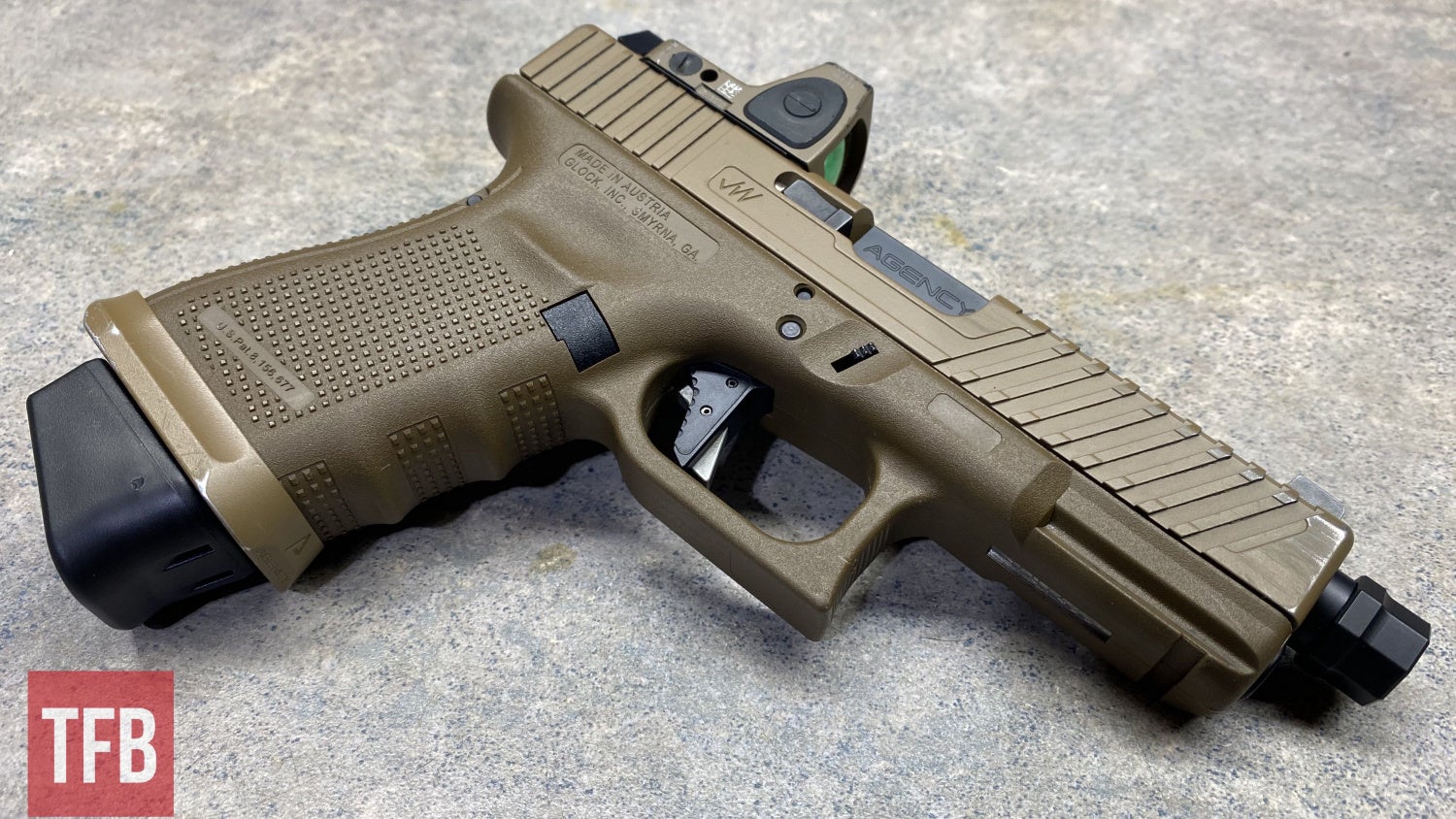
Perishable Skills
Now don’t get me wrong, he is an experienced shooter but adding stress into the equation makes the brain do things unintentionally sometimes. Often times, when individuals receive their permit to carry a concealed firearm, their journey to train is done and they are all set to carry. The main issue with this is the fact that shooting is 100% a perishable skill and isn’t something like riding a bike. If you don’t maintain all the movements and keep muscle memory in place, your accuracy and skill set will deteriorate over time.
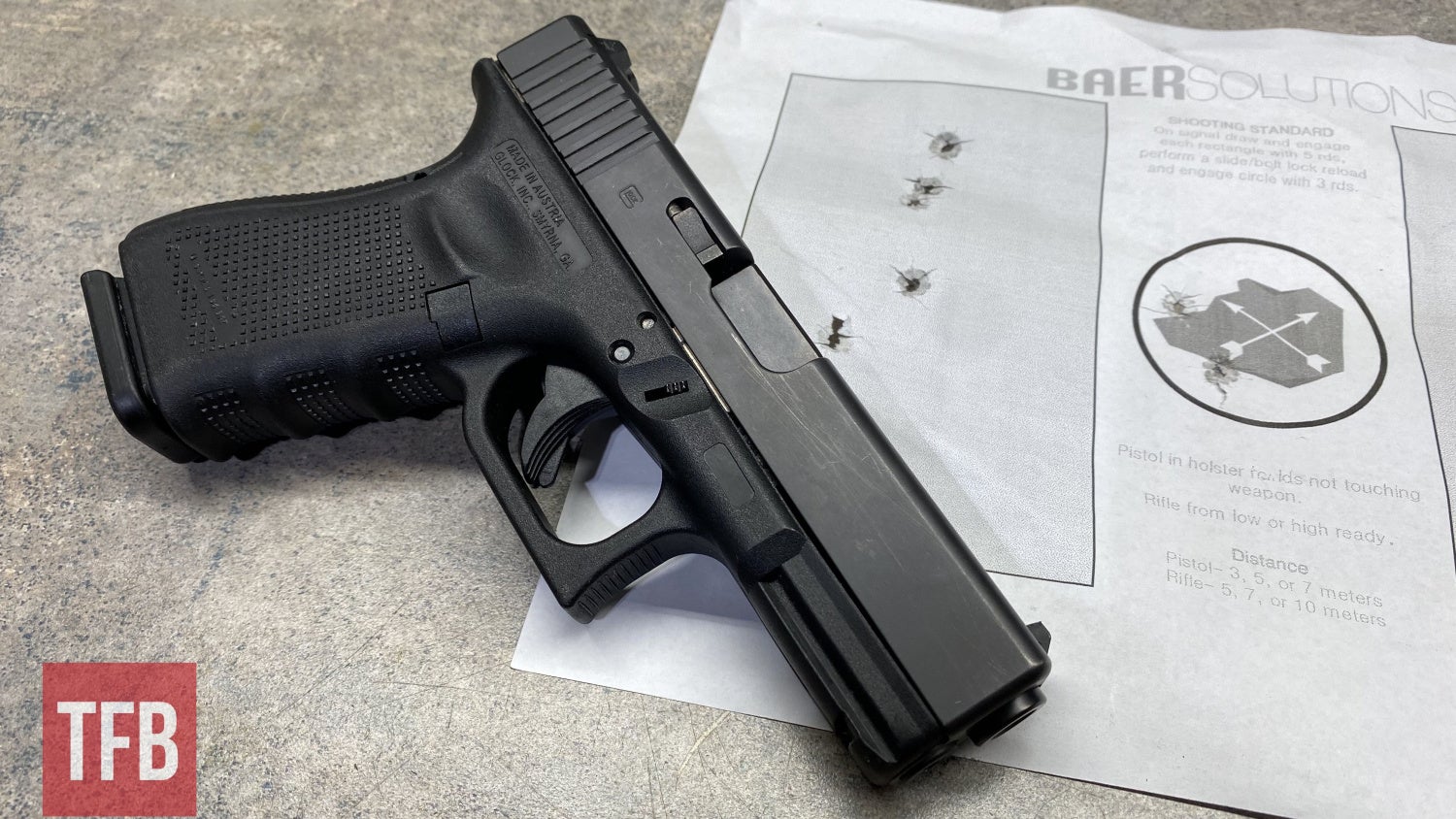
The first step in being proficient in firearms is having a solid foundation with shooting mechanics and fundamentals. Even for experienced shooters, it’s important to sometimes take a basic handguard class to refresh and practice skills you already have. Once that foundation in mechanics and fundamentals is established, it’s time to start incorporating stress into drills to simulate real-world stress.
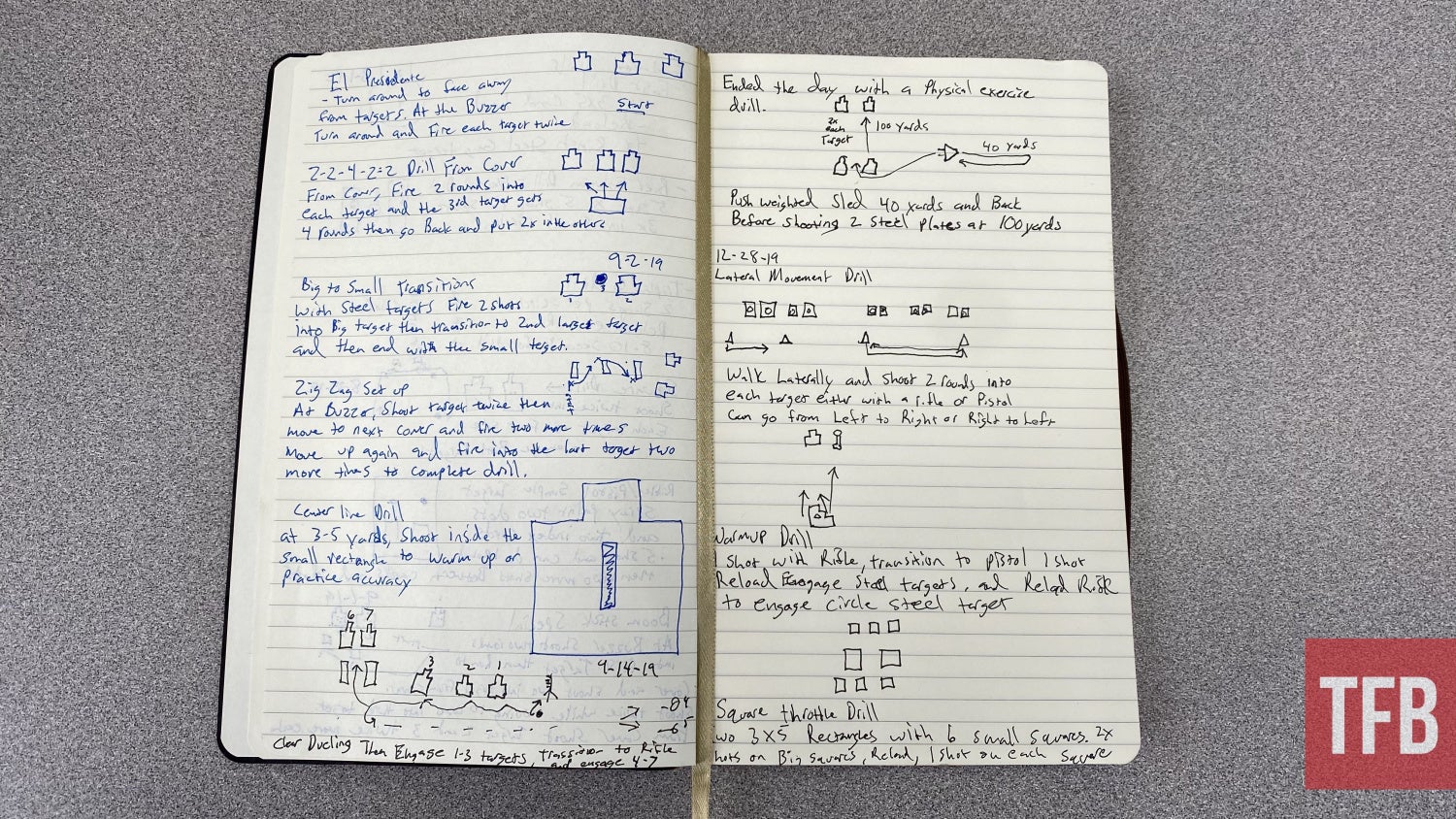
Having a notebook with different drills can help give ideas on the fly and keep your training schedule fresh.
Moving Outside Your Comfort Zone
Once you become proficient with making hits and consistently shooting accurate, it’s time to start adding in variables. Adding stress into a situation where you need to use a skill set can do some really interesting actions or training scars will come out. An example of this was on my Saturday morning range session again when my other buddy was stuffing AR magazines under his right arm when he was reloading. After the drill was done, I asked him about it and he started laughing and said during his deployments he would always keep magazines when they were empty and never dropped them. After a few minutes of talking, he said it’s something he’s been trying to break but under stress, he resorts back to his training.
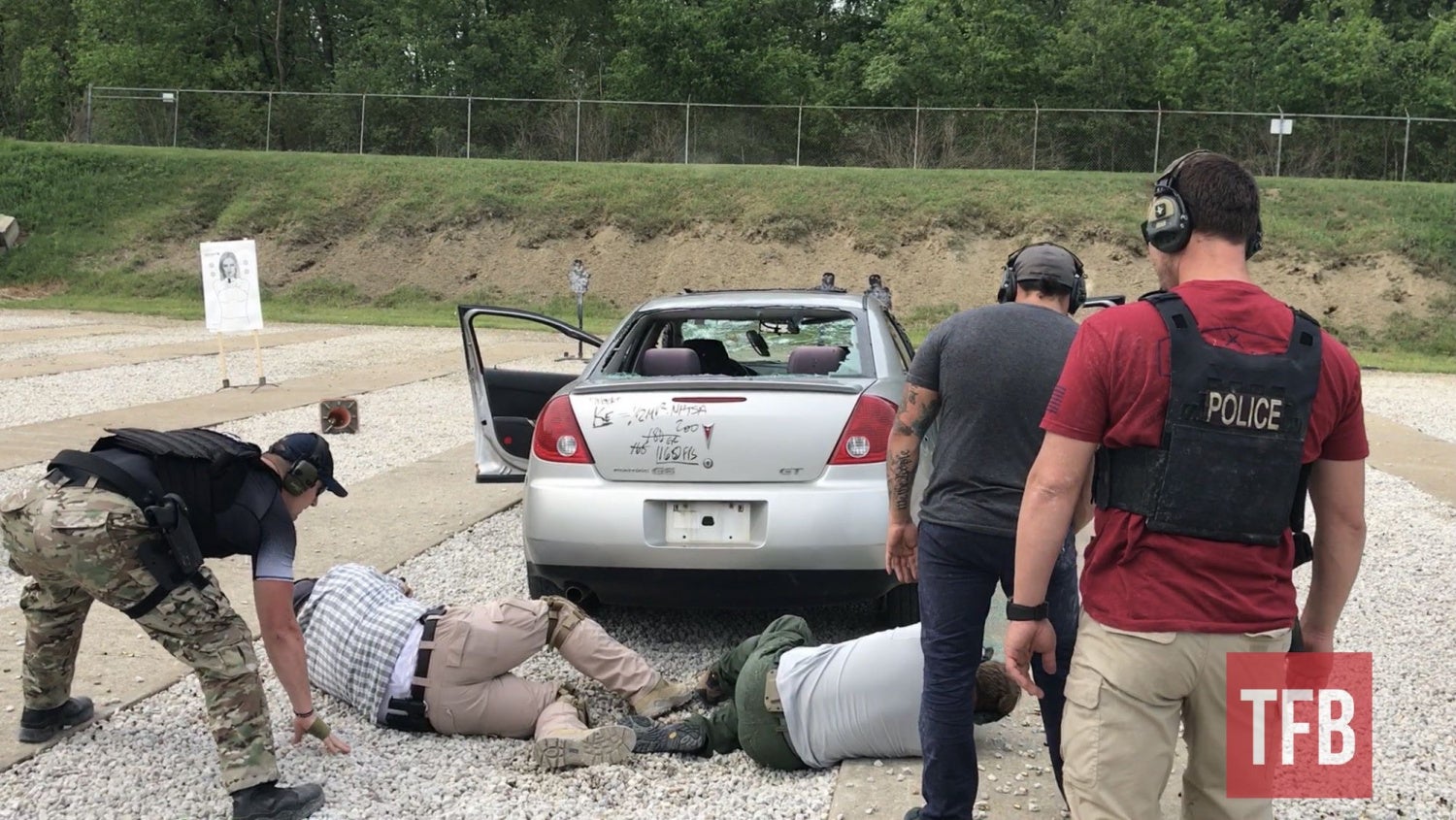
I thought this brought up a good point that we do things instinctually when put under stress. Fighting the adrenaline dump and trying to overcome the loss of fine motor skills and clear thinking can be the difference between surviving and losing the fight in most cases. It’s great to have fantastic shooting skills as a base but if you lose your ability to move and stop the threat, those skills aren’t near as useful.
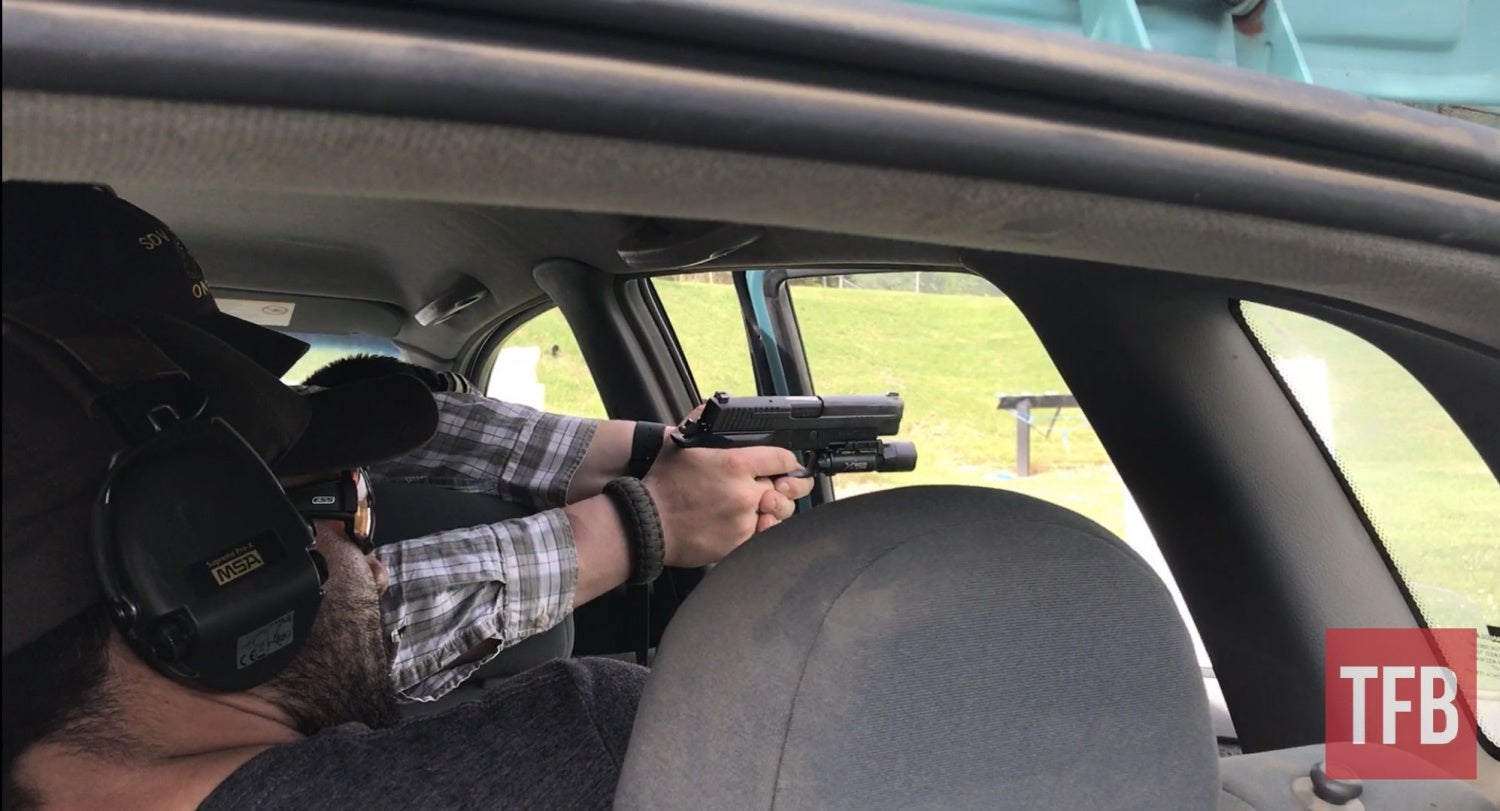
The day after my range session I was at the finish of a local marathon supporting friends and family. I found myself in the middle of the street surrounded by people. I started thinking about what I would do if something happened and I had no cover and no real good place to go. It may be a strange way to think, but if you change your mindset eventually your behavior will change as you have more experiences. Finding a place to practice shooting in different positions from cover can help both in terms of concealed carry or home defense. Having a plywood barricade with different openings cut out is a great way to force yourself to train in uncomfortable shooting positions.
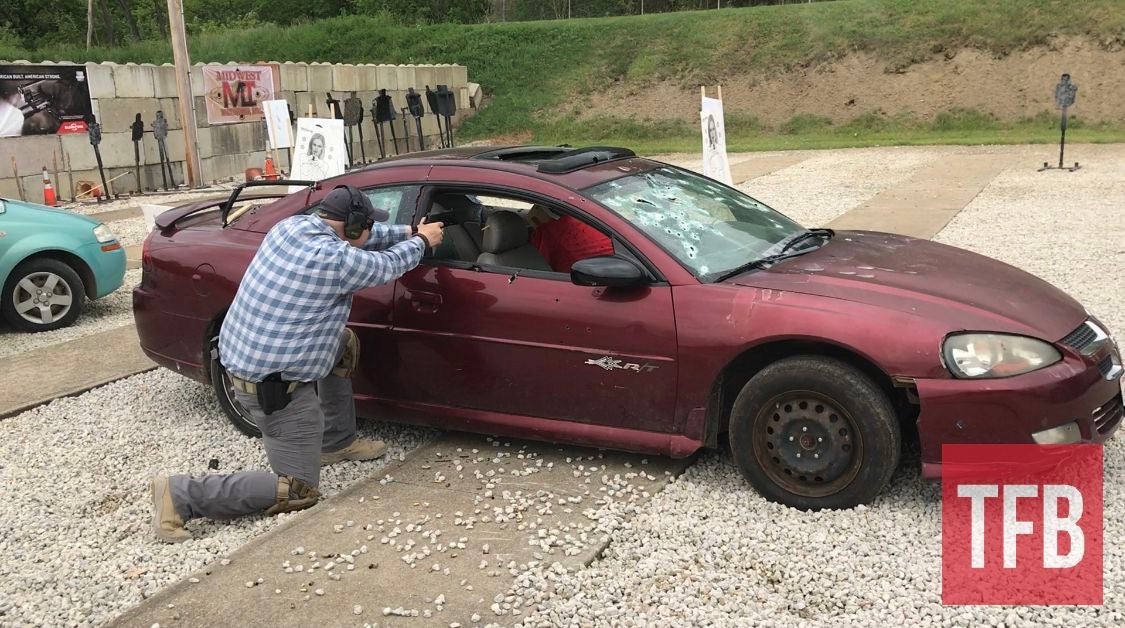
Challenging yourself in shooting positions adds another skill into your tool belt and helps build up your shooting foundation. With ammo being so short in supply, it’s more than possible to practice sight picture and trigger control in your home around various corners and practicing behind different sized objects to build that mindset of becoming harder to fight. The idea of becoming proficient in shooting under stress and practicing shooting in uncomfortable positions will help you be more prepared for any situation and give you a better chance of surviving in a self-defense situation if you ever encounter one.
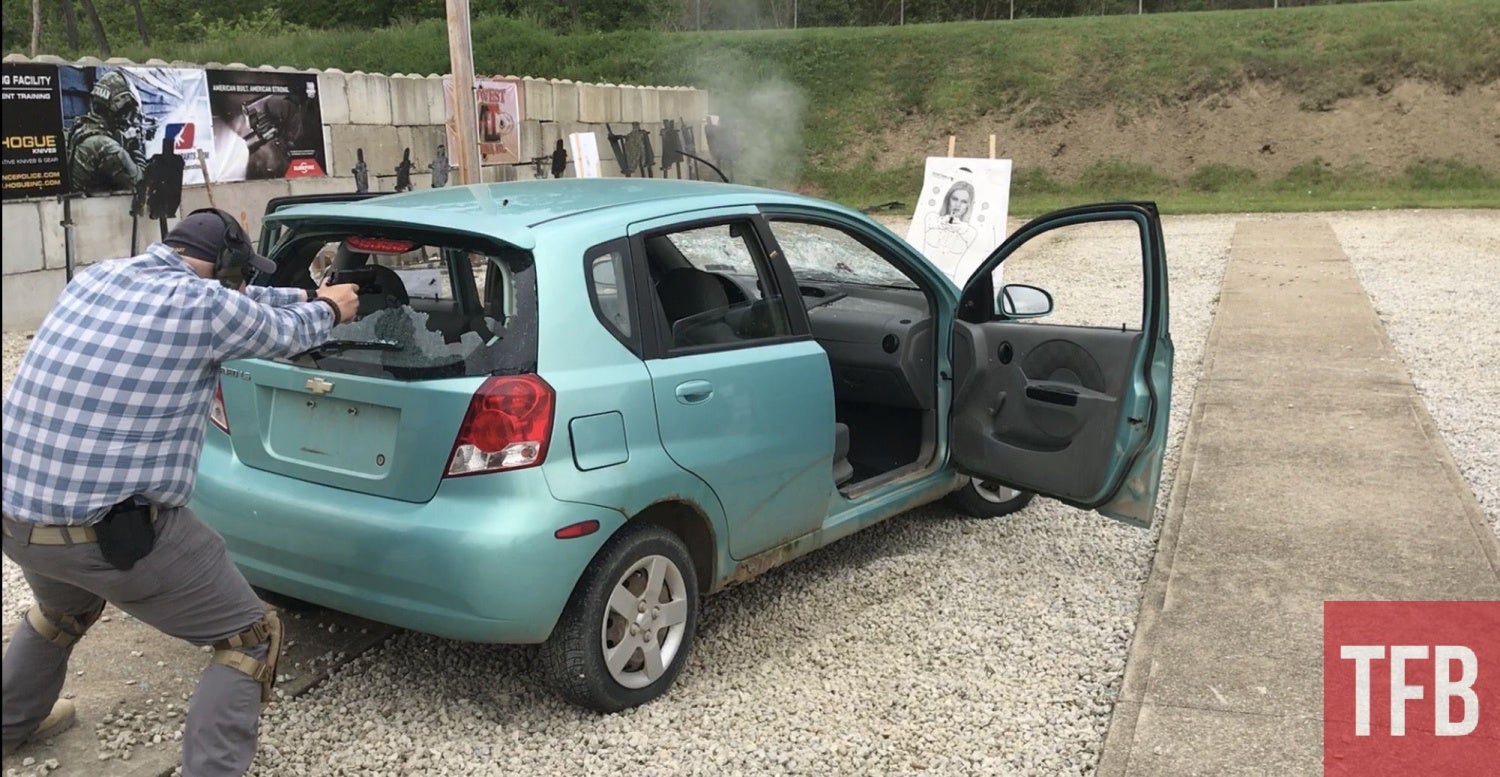
Overall Thoughts
It all boils down to the importance of training under similar stress levels to what would be present in real-world scenarios. It’s hard to replicate those scenarios where your stress level rises immediately and clear decisions become tough to see or comprehend. I can’t stress enough how important it is to try and train under some sort of stress to understand how you will react and have some prior knowledge of the feeling instead of experiencing everything the first time in a real self-defense situation.
Practicing from cover and adapting your thought process about cover and skills will just give you more abilities to create an unfair fight where you benefit in the end. Let me know what you guys do to add stress whether it’s physical exertion or time at the range in the comments below. If you have questions feel free to shoot me a message on Instagram @fridgeoperator. Stay safe out there!
We are committed to finding, researching, and recommending the best products. We earn commissions from purchases you make using the retail links in our product reviews. Learn more about how this works. Your Privacy Choices
Your Privacy Choices
